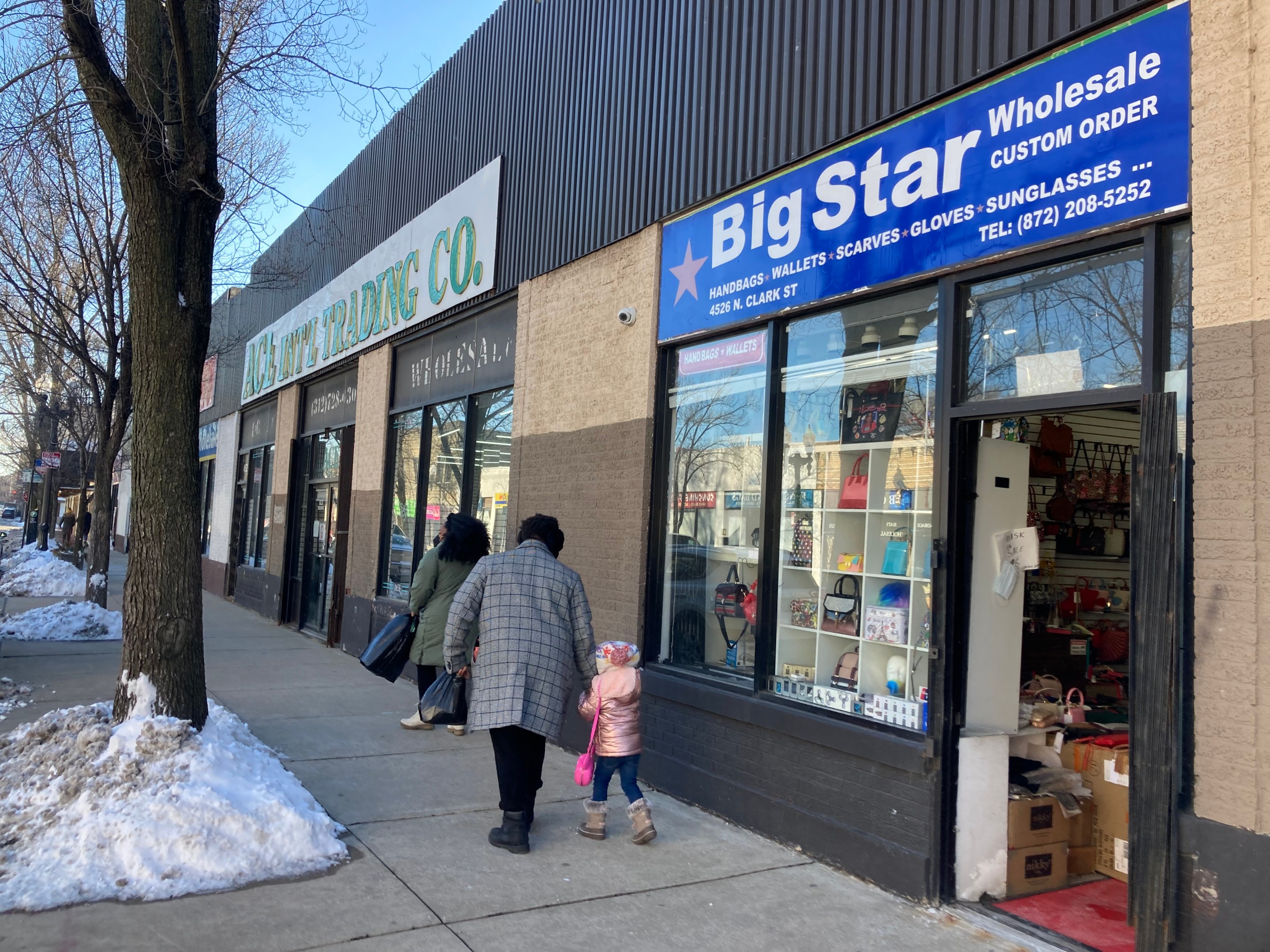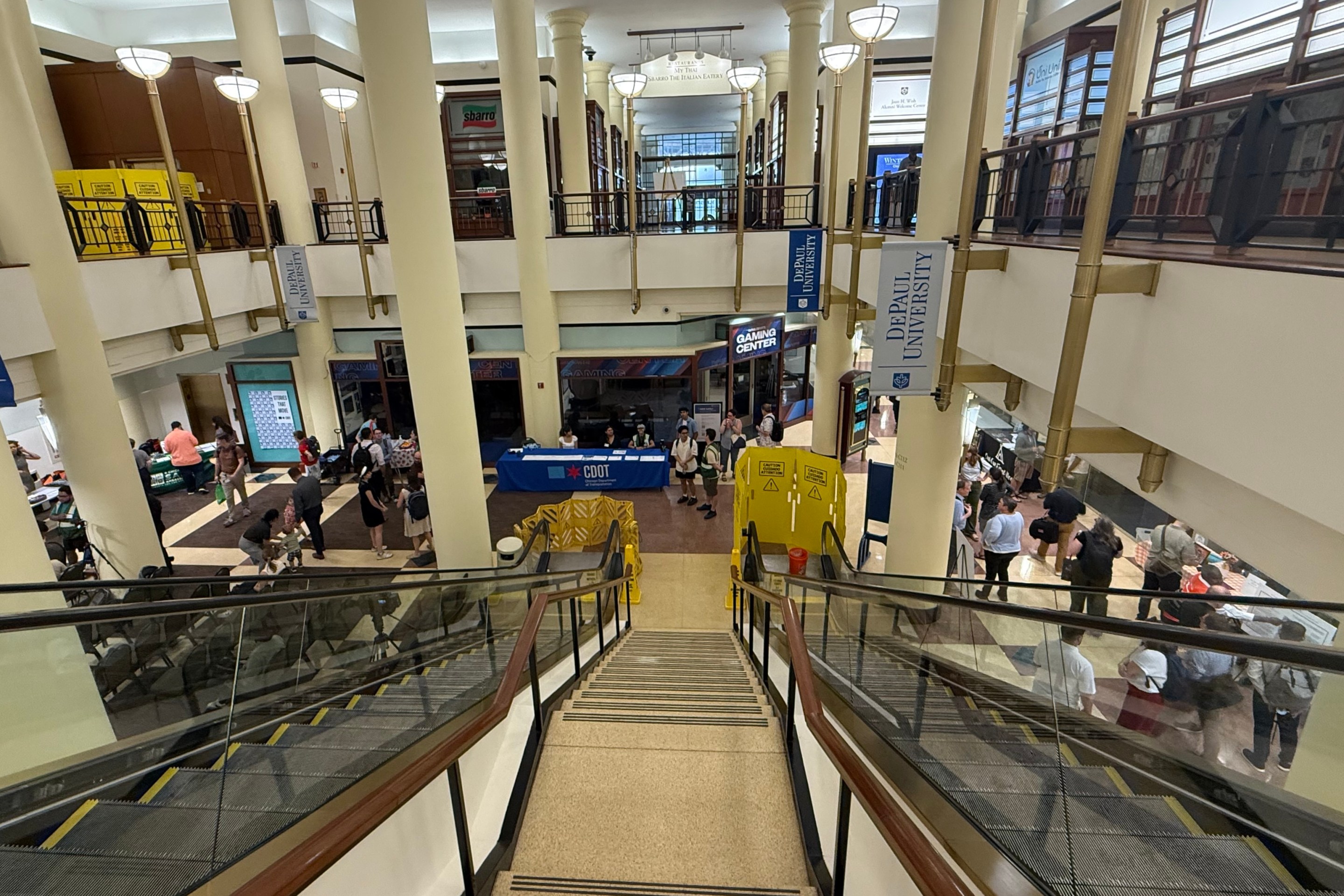On Tuesday the Chicago Department of Planning hosted a virtual community meeting for the "Clark Street Crossroads" study of a one-mile-long stretch of Clark between Montrose and Foster avenues in the Uptown community area, which serves the Ravenswood, Sheridan Park, Andersonville districts.
This project was kick-started by a number of stakeholders that comprise the steering committee, including Ald. Andre Vasquez (40th), Ald. James Cappleman (46th), Ald. Matt Martin (47th), Andersonville Chamber of Commerce, Greater Ravenswood Chamber of Commerce, Uptown Chamber of Commerce, and Clark Street Block Club, to name a few. These organizations will help collect feedback from residents to identify appropriate types and scales of new development along the corridor and introduce land uses to increase foot traffic. The study will also promote growth and improvement along the corridor through zoning and land-use by identifying public realm improvements for gathering, art, and placemaking; and improving the streetscape to promote additional safety and comfort for people walking and biking.
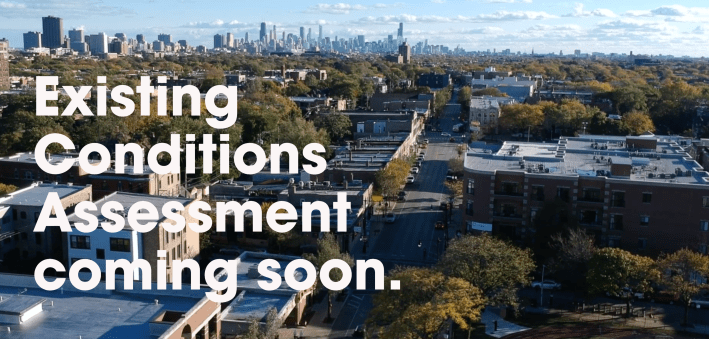
DPD commissioner Maurice Cox opened the meeting by saying the name of the study is apropos, given that Clark intersects many neighborhoods and wards. Cox said he sees sees “corridor revitalization as key to creating neighborhoods that many people want to live in."
Ald. Martin said his ward has seen lots of turnover in commercial properties, and he felt that a corridor plan could assist with providing a seamless transition to having businesses and buildings that reflect the needs of the community. He said he would also like to see the best assets of the area such as walkability, transit access, bikeability, and the local arts scene made even better.
Ald. Cappleman also said he sees Clark Street Crossroads as an opportunity to improve upon Uptown's positive qualities. He noted that about half of the residents in the area do not own cars. However, Cappleman added, there are also challenges in the form of many vacant storefronts along Clark within his ward. He indicated that he wants to see a grocery store and more service-oriented businesses along the corridor.
Next the presenters gave an overview of insights gleaned from a “walkshop” held last December. Key feedback from that event included:
- The desire for wider sidewalks
- Requests for streetscape cohesion between neighborhoods through banners, light poles, street trees, public art, and benches
- The desire for active storefront windows
- Auto-oriented businesses with driveway and parking lots form a barrier to connectivity and walkability
- Requests for connected and protected bikeways
Other feedback collected so far from the Clark Street Crossroads website includes:
- Support for mixed-use development with ground-floor retail and upper-level residential units
- The desire for greater diversity of housing options, including affordable housing
- A call to prohibit new auto-oriented businesses and mitigate existing driveways/curb cuts
- The desire to widen sidewalks, replace paint-and-post sidewalk extensions with permanent concrete bump-outs, and improve crossings for people walking, biking, and using ride-hail
- Support for mitigating existing surface parking lots along the street edge
- The desire for more murals and other public art, tactical urbanism, outdoor patios, and other forms of placemaking
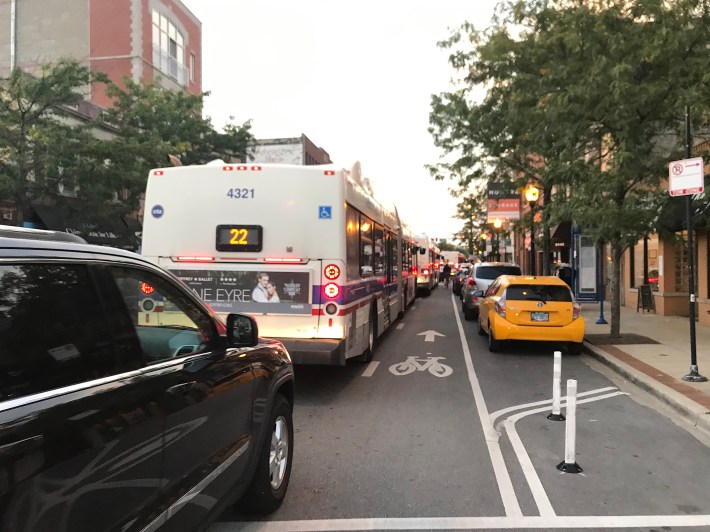
It's important to understand demographic trends when determining a path forward for the area. Meeting attendees were shown a graph of demographic shifts in the five census tracts that border the study area. Most of the modest population growth in the area has been driven by empty-nesters/young seniors; families or adults between 35 to 54; and a small increase in children ages 5 to 19. There was a loss of young adults/families (20-34) and children under four years.
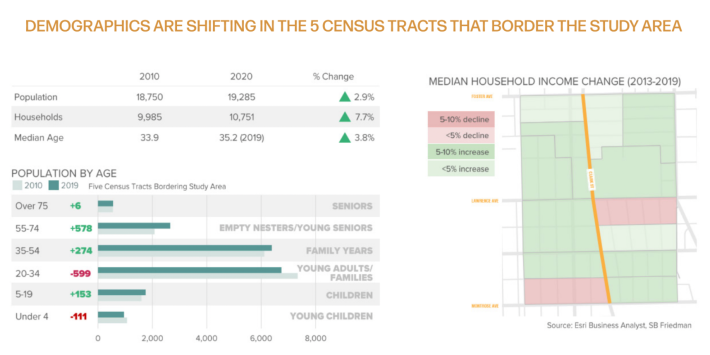
The presenters also discussed housing trends in the area. While in recent decades new housing developments in the area tended to be condos, nowadays there's a shift towards more apartments. From 2013 to 2022, 195 units of condos have been built along this stretch of Clark Street and 186 apartment rental units have been constructed. Condo prices and apartment rents have both increased significantly since 2012. Between 2012-2021 the average sale price for condos has risen 80 percent and the average rent in the area has increased by 23 percent. It was no surprise that when attendees were later asked what sort of housing they'd like to see be built in the area, income-restricted/workforce rental apartments, as well as new condos received the largest percentage of votes. Market-rate apartments, townhomes, and senior housing were also preferred, but at lower numbers.
The presenters provided an overview of the existing cross sections of Clark.
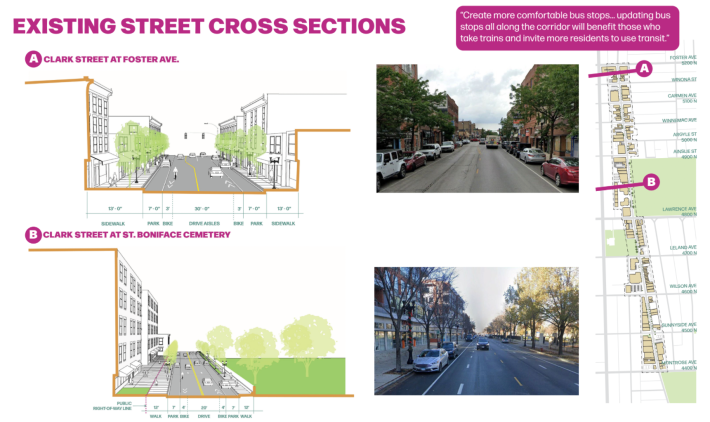
Next, they discussed underutilized assets and opportunities to activate the public realm. Some of the ideas include a curbless roadway treatment like the nearby Argyle "shared street"; raised crosswalks; protected intersections; pedestrian islands; bus boarding bump-outs; and "People Spot" mini-parks in the parking lane.
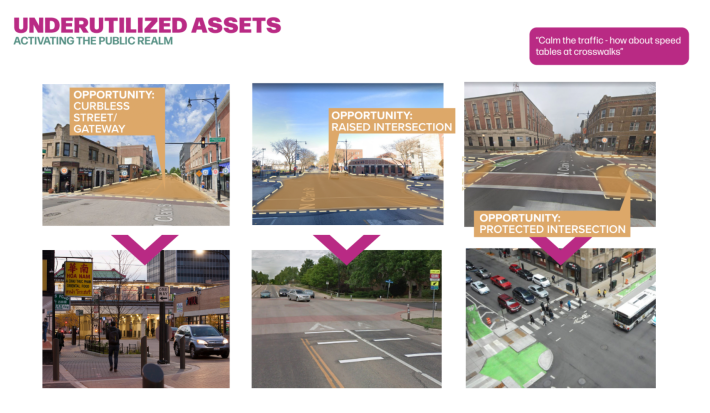
When participants were asked what improvements they would prioritize for the public realm, intersection crossings and storefront facades were the top choices.
Throughout the virtual workshop participants were asked poll questions. Here are a few highlights:
- When asked, "How do you most frequently travel the corridor?" the top response was walking followed by driving, biking, and transit.
- When asked, "What is missing from Clark Street?" the top responses were community spaces and dining followed by shopping, recreation/entertainment, housing, and work spaces.
- When asked what commercial uses they would like to see along Clark, attendees said they'd like to see destination retail, entertainment, restaurants, coffee shops, and childcare.
If you would like to provide feedback for the Clark Street Crossroads study, you can find the community survey on the project website under "Engage." A replay of Tuesday's meeting can be found on the project website as well. It was nice to hear from those involved in the project that biking has come up a lot in steering committee conversations and in public feedback. Hopefully the improvements to the area will include protected bike lanes and more public gathering spaces.
